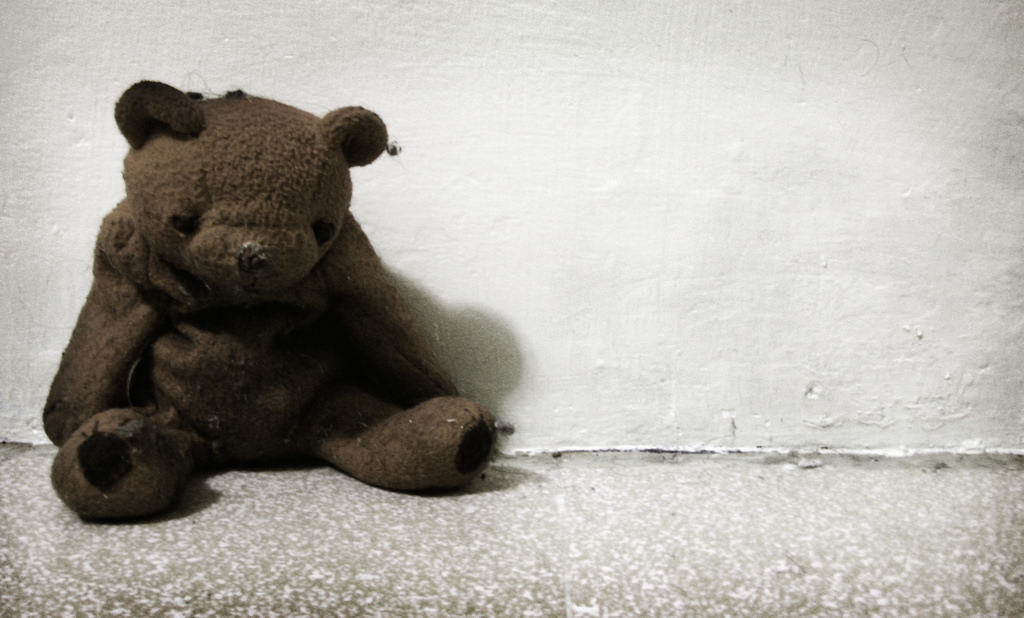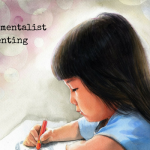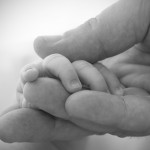
The following is an excerpt from my upcoming book on child liberation theology.
“Children’s lives — how they are treated, the quality of their lives — indexes how far Israel is from embodying God’s will. The fate of the children, the orphans in particular, is a barometer that indicates how far Israel is from keeping the Torah, from living as God would have them live.”
~ Jacqueline E. Lapsley[i]
We live today in a world that does not value children like it should. We live, in many ways, in an anti-child world. Our world uses children and abuses children. Our world reduces children to political fodder. Our world objectifies children. Our world forces children to serve as battlegrounds for debates about God instead of respecting them as images of God.
This is the world we live in, and it is no wonder that God calls this world of ours fallen. Our world treats children in broken, sinful ways. “In many ways we treat children as almost subhuman.”[ii] It is all those ways—the ways in which we do not value children and mistreat children—that make up the idea of childism.[iii] Childism is prejudice against children. It is an active hatred of children, whether due to their smallness or their neediness or their loudness.
This idea of active hatred of children is different from another force in our world. The other force I call adultism.[iv] Adultism is the idea that adults are better than or more valuable than children—that the adult experience and point of view is superior, more important, and more worthy of our attention than the child experience and point of view. While adultism and childism are two distinct forces, they are related. The idea that adults are better or more valuable than children rests on the belief that children are lesser than. Viewing children as lesser than is the seed that grows into hatred of children. But hating children is also a seed. It is a seed that will grow into valuing adults more than children. In the end, we are left with trees that bear both evil fruits, no matter which seed we plant first.
Before I continue, I want to make something clear: While the world we live in mistreats children, we should not pretend like it is worse than any other time in history. I often see Christians in my conservative homeschooling world do this. They make claims like The world has never been so godless before! or It’s never been more dangerous to raise a family! None of the claims are true; none of them stand up to a quick look at history. But they sound good in the sense that they sound terrifying and are therefore good for business. They make us all want to buy books from whoever wrote the so-called solution. Unfortunately, it’s nothing but snake oil.
So it is really important that we avoid that sort of panic. It is especially important for those of us who care about children’s rights because certain episodes of moral panic have unfortunately surfaced during the children’s rights movements of the last two centuries. The Satanic Panic of the 80’s and 90’s involving daycares and alleged ritual abuse is a good example of this.[v] Such moments of panic do not help fight against child abuse and neglect. They do not help fight for child liberation. Instead, they set the fight backwards several steps by conjuring up fake monsters and chasing after windmills. They also make people who might be allies to children’s issues suspicious of efforts to protect children.
Yes, there is significant abuse and pain inflicted by our world upon our children. Yes, “Without risking hyperbole, one can say that the visible situation of the child today frequently is grim.”[vi] But no, we should not exaggerate or resort to hyperbole. There is enough work to be done within the confines of reality. We do not need to fabricate additional work to motivate us.
So what is the world we live in when it comes to children? This is what liberation theology calls the “social context.” It is the right-here and right-now. It is all the good things and all the bad things that surround us and motivate us to seek after and study God—to do theology, in other words. Theology is, after all, logy, which means “study,” and theo, which means “God.” Theology is the study of God. But we never study God in a vacuum. [vii] Even if we do theology in a comfy armchair while smoking a cigar, we are doing theology somewhere, during sometime, and someone is doing that theology. That is the world we live in, the social context.
So as we do child liberation theology, we must ask: what world do we live in? What sort of world are our children growing up in? What are the challenges and troubles they will face?
The shortest answer is that we live in an anti-child world. The American world stacks the deck against children even before they are born. Did you know that the United States was twenty-eighth place in infant morality in 2011?[viii] As if that was not bad enough, our infant morality rate is also racist, with African-American and Native-American babies being twice as likely as white babies to die during their first year.[ix]
Despite these facts, “the federal government mandates only 12 weeks of unpaid leave for employees in companies with at least 50 workers. Most women, however, work in smaller businesses, and many of those who work in large enough companies cannot afford to take this much unpaid leave.”[x] As a result, most American mothers only take six weeks of childbirth leave.[xi] And make no mistake, this has an impact on families: “When a family is stressed by a baby’s arrival, leaves of six weeks or less are linked to increased maternal anxiety, depression, conflict between work and family responsibilities, and negative interactions with the baby.”[xii]
The stress of a pregnant mother can impact the health of an unborn child “above and beyond the impact of other risks, such as maternal smoking during pregnancy, low birth weight, postnatal maternal anxiety, and low family income.”[xiii] A mother’s stress can lead to childhood anxiety, child anger and aggression, a short attention span, and lower mental performance.[xiv] But despite all that, the United States makes no effort to ensure mothers have stress-free pregnancies—even though it is an established fact that something as simple as paid maternity leave can reduce our infant mortality rate by thirteen percent![xv] From the moment of conception, children are being brought into an American world that cares little for their health and well-being.
Despite so many Christians’ claims of being “pro-life,” it is clear that whatever lives many of them favor, they are not real children’s lives. If all you care about is getting a child out of a womb—but you do not care about the health and well-being of that child while it is both inside and outside of that womb—you really do not care about the child. You care, rather, about some abstract ideal of a child that does not exist in the real world. Children in the real world have real needs and those needs are really being unmet.
The world we live in is not kinder to children once they are born, either. Children are born into a world where abuse potentially lurks around every corner. The United States has one of the worst child abuse records among industrialized nations — losing on average between four and seven children every day to child abuse and neglect.[xvi]
Child abuse takes many forms in the U.S., including neglect, physical abuse, sexual abuse, emotional abuse, sibling abuse, and even religious abuse. Yes, even our churches—churches that follow Jesus, who said to welcome all the little children—are responsible for child abuse. Many churches have protected adults who prey upon children. Many churches have taught parents that God wants them to hurt their children. And many churches have taught children that they are gross, disgusting people who deserve all that abuse and pain.
The abuse of children in the U.S. also connects with the international mistreatment of children, through forces like trafficking. Between 2007 and 2016, the National Human Trafficking Resource Center hotline received tips on more than 4,000 cases of child labor trafficking inside the United States.[xvii] Child laborers end up in any number of industries. One example is tobacco farms, where children “are exposed to nicotine, toxic pesticides, and other dangers. Child tobacco workers often labor 50 or 60 hours a week in extreme heat, use dangerous tools and machinery, lift heavy loads, and climb into the rafters of barns several stories tall, risking serious injuries and falls.”[xviii] None of this is to even mention the many products we buy in the U.S. that are made overseas by child labor,[xix] potentially even child slaves.[xx]
Child sex trafficking is even more prevalent in the U.S. Between 2007 and 2016, the National Human Trafficking Resource Center hotline received tips on more than 14,500 cases of child sex trafficking inside the United States.[xxi] The National Center for Missing and Exploited Children reports that 1 in 6 endangered runaways they encountered were likely sex trafficking victims, 68% of which were in the care of social services or foster care before running away.[xxii] We are clearly failing not only many children, but also many children who were specifically entrusted to our government to protect.
International forces additionally impact U.S. children in unexpected ways. Americans often like to rejoice they are living in a country that is not “barbaric” like some stereotypical third world country. But this is sadly not only a racist view; it is also an incorrect view. Cruel practices against children, like the mutilation of young girls’ genitals, happen right here in the U.S. In fact, the number of girls at risk for mutilation has tripled over the last 25 years to 513,000 girls.[xxiii] 26 states have no laws criminalizing the practice.[xxiv]
Other practices that objectify young girls and reduce them into sex objects, like child marriage, also happen right here. And these practices are not limited to extremist religious groups like the Fundamentalist Church of Jesus Christ of Latter-day Saints (FLDS).[xxv] Child marriage has happened in the U.S. in families of many different faiths, including Buddhist, Christian, Hindu, Muslim, and Sikh.[xxvi] Child marriage has happened in the Christian homeschooling world in which I grew up.[xxvii] Even a popular media figure like Phil Robertson of Duck Dynasty promotes child marriage.[xxviii] These opinions continue to be enshrined in U.S. law, as children as young as 12 can be married off to adults in certain states.[xxix]
But it is not only the area of marriage where children have no say. Children have no voice in all sorts of matters: from medical care to immigration to education to government. In several states, parents can legally allow their children to die by denying them medical care—provided those parents have “religious reasons” for doing so. Children have no say in the matter. The rights of the parents rule supreme; children’s rights are non-existent.[xxx]
The U.S. forces many immigrant children—fleeing to the U.S. because of abuse or violence in their home countries—into deportation proceedings with no legal representation. In 2014, 42% of 20,000 immigrant children facing deportation had no attorney. Children five years old and younger have had to defend themselves in court.[xxxi]
In the public schools, corporal punishment remains legal in nineteen states.[xxxii] Those beatings are distributed in racist and ableist ways. Teachers beat black children at disproportionate rates compared to white children.[xxxiii] Teachers beat Native American children at disproportionate rates as well.[xxxiv] (Native American children also face complete erasure of their people from public school textbooks.[xxxv]) Teachers also beat special needs students at disproportionate rates.[xxxvi] Special needs students face additional threats, such as being brutally restrained and thrown into “scream rooms.”[xxxvii]
In homeschooling, despite hundreds of cases of severe abuse and death[xxxviii], there is virtually no oversight or regulation to protect children. In fact, only two states ban convicted sex offenders from pulling their kids out of public school in order to keep them at home, away from mandatory reporters.[xxxix] Only two states have background-check processes for parents who choose to homeschool.[xl] Eleven states do not require parents to notify anyone if they decide to homeschool.[xli] Seventeen states have no required subjects for homeschooled students.[xlii] In 40 states, homeschooling parents are not required to have even a high-school diploma.[xliii]
Despite being forced to pay taxes[xliv] and treated in courtrooms as adults[xlv], youth under the age of 18 in the U.S. are unable to vote. With reference to taxes, this is literally taxation without representation—a cornerstone reason for the founding of the U.S. Yet we are subjecting teenagers to the same oppression we once so loudly denounced. With reference to the criminal justice system, most states set the minimum age at which children can be tried, convicted, and sentenced as adults at 14.[xlvi] Yet even younger children can face this fate, as “fourteen states have no minimum age at which children can be prosecuted as adults,” leading to cases where “children younger than 10 have been prosecuted as adults.” [xlvii]Sentences as severe as life without the possibility of parole have befallen them.[xlviii] The government treats such children as mature enough to condemn to life imprisonment but apparently not mature enough to participate in the electoral process.
LGBTQ youth daily face rejection and pain. While LGBTQ youth make up only five percent of the general youth population, they make up around forty percent of the entire homeless youth population. Indeed, the number of LGBTQ youth in the U.S. who are homeless—forty percent of whom were rejected by their families, often for religious reasons—is between 320,000 and 400,000.[xlix] Transgender children are particularly vulnerable: nearly 80% of transgender youth report experiencing harassment at school[l] and 12% report being sexually assaulted in K–12 settings by peers or educational staff.[li]
Intersex children are often stripped of their agency with regards to medical decisions. Their parents put them through life-altering surgeries when they are infants that have immense ramifications for them for the rest of their lives, sometimes even prompting them to suicide.[lii] Even though 1 in 1,000 newborns are intersex[liii], religious leaders often callously dismiss their very existence.[liv] Intersex people’s lives become collateral damage in the U.S.’s culture wars.[lv]
Of course, no discussion about anti-child sentiments in the U.S. would be complete without mentioning the controversial subject of abortion. Approximately 1 million abortions are conducted every year in the U.S.—which is about 21% of all pregnancies.[lvi] Whatever your position is on abortion, I think we can all agree that abortion signifies the fact that we live in an anti-child world. Pro-life individuals would argue that abortion is murder, and thus the act of abortion itself represents how our society does not value children. Pro-choice individuals, on the other hand, would argue that abortion is necessary because we live in a society that does not support women and families, making it difficult for many women to have children. Regardless of which side you take, both sides agree: abortion represents, for one reason or another, that we live in a world that does not lift up children, mothers, and families. Whether or not you support or condemn abortion rights, the fact that abortion exists—that so many people feel they have no other choice but to end the life of a fetus or child—means we have a long way to go as a society in valuing children.
One might be tempted to look at all these different problems as separate problems. But that would be a mistake. These problems indicate that there is a systemic prejudice in our world against children—meaning, anti-childness is wound up in the very way our world is structured.
A parallel situation can be seen in the Book of Isaiah, where the prophet Isaiah “excoriates the people [of Israel] for failing to execute justice for the widow and the orphan, the most vulnerable members of society.”[lvii] Isaiah does this on numerous occasions. He first exhorts the Israelites, “Learn to do right; seek justice. Defend the oppressed. Take up the cause of the fatherless; plead the case of the widow.”[lviii] Then he condemns the leaders of the Israelites for not heeding his exhortation: “Your rulers are rebels, partners with thieves; they all love bribes and chase after gifts. They do not defend the cause of the fatherless; the widow’s case does not come before them.”[lix] Later he issues a warning to the same leaders: “Woe to those who make unjust laws, to those who issue oppressive decrees, to deprive the poor of their rights and withhold justice from the oppressed of my people, making widows their prey and robbing the fatherless.”[lx]
Note that Isaiah does not simply condemn the people of Israel for failing to care for children. Rather, Isaiah lays the blame for how Israel fails children at the feet of the people’s leaders—and specifically, the laws they make: “your rulers are rebels,” he proclaims, “who make unjust laws.” “Those who issue oppressive decrees” are the ones “making widows their prey and robbing the fatherless.” In other words, the anti-child attitude prevalent during Isaiah’s time was not simply a matter of individual failure, but a systemic attitude.[lxi]
This is why Jacqueline E. Lapsley said in the opening quotation of this article that, “Children’s lives — how they are treated, the quality of their lives — indexes how far Israel is from emobyding God’s will.”[lxii] God established codes of behavior and ethics for not just the Israelites as individual people but also for Israel as a nation. Those codes included requirements for how children—specifically orphans—were to be treated. When children are left to suffer, that is not a personal failure. It is a wholesale failure on the part of the nation. The nation’s laws—laws established by God—have been perverted or neglected. So when the Israelite children suffer, Isaiah’s prophetic critique “is leveled not at ordinary folk for their refusal to lend a hand to the widows and orphans but at Judah’s rulers, the people who lead, who set policy and make decisions… The issue is not the occasional refusal by ordinary people to lend a helping hand to a neighbor in need but the wholesale abandonment of the widows and orphans to a corrupt legal system.”[lxiii]
While Isaiah was speaking prophetically against a government centuries ago, his words—and ringing condemnations of a society that does not value children— remain just as relevant today. Like Isaiah, we live in a world that abuses children from the individual to the systemic level—a world that presses a boot to children’s heads to keep them down. We live in a world that teaches children they must be trained up like animals, corralled like beasts, and punished like the worst of sinners. This world is, in every sense, an ungodly world. It is the world that Jesus so prophetically spoke against when he invited children into his midst instead of keeping them away. It is the world that Jesus asked us to tear down when he said to love children like we love him.
This is the true meaning of child liberation theology: that as we study and know God, as we learn to love Them better, we understand that our right-here and right-now needs to change. Our right-here and right-now is broken. It hurts children. This is the starting point for everything that is to come. It is the point of departure. It is the reason why we do what we do. If our theology does not help children break from the evils of this world, then it is not the right theology. If our theology does not lift up, love, and protect children like Jesus did, it is a fraud.
The world we live in is where we begin.
Works Cited
[i] Jacqueline E. Lapsley, “’Look! The Children and I Are as Signs and Portents in Israel’: Children in Israel,” The Child in the Bible, ed. by Marcia J. Bunge, Wm. Eerdmans Publishing Co., 2008, p. 86-7.
[ii] Marcia J. Bunge, “The Vocation of the Child: Theological Perspectives on the Particular and Paradoxical Roles and Responsibilities of Children,” The Vocation of Children, ed. by Patrick McKinley Brennan, Wm. Eerdmans Publishing, 2008, p. 33.
[iii] Elisabeth Young-Bruehl, Childism: Confronting Prejudice Against Children, Yale University Press, 2013.
[iv] James St. James, Everyday Feminism, “7 Harmful Ways Parents Often Wield Adultism Against Their Kids,” March 27, 2016, link, accessed on April 22, 2016.
[v] Dan Shewan, Pacific Standard, “Conviction of Things Not Seen: The Uniquely American Myth of Satanic Cults,” September 8, 2015, link, accessed on April 22, 2016.
[vi] Patrick McKinley Brennan, “Introduction,” The Vocation of the Child, ed. by Patrick McKinley Brenna, Wm. B. Eerdmans Publishing Company, 2008, p. 4.
[vii] Jerome W. Berryman, Godly Play, Harper San Francisco, 1991, p. 153: “Theology is language about God… A theologian needs to be much more than a historian or a systematic logician. If the fundamental experience is not present to this person, then the reference point for the whole language system cannot be understood. Without the original vision theology becomes mere words about words.”
[viii] Laura E. Berk, Child Development, Pearson Education, 2013, p. 118.
[ix] Ibid, p. 118.
[x] Ibid, p. 119.
[xi] Ibid, p. 119.
[xii] Ibid, p. 119.
[xiii] Ibid, p. 106.
[xiv] Ibid, p. 106.
[xv] Boston National Public Radio, “Study: Paid Maternity Leave Reduces Infant Mortality Rates,” April 6, 2016, link, accessed on April 22, 2016.
[xvi] Childhelp, “Child Abuse Statistics and Facts,” link, accessed on November 5, 2015.
[xvii] Polaris, “Labor Trafficking,” link, accessed on April 22, 2016.
[xviii] Human Rights Watch, “Tobacco’s Hidden Children: Hazardous Child Labor in United States Tobacco Farming,” May 13, 2014, link, accessed on April 22, 2016.
[xix] United States Department of Labor, “List of Goods Produced by Child Labor or Forced Labor,” link, accessed on April 22, 2016.
[xx] Abby Haglage, Daily Beast, “Lawsuit: Your Candy Bar Was Made By Child Slaves,” September 29, 2015, link, accessed on April 22, 2016.
[xxi] Polaris, “Sex Trafficking,” link, accessed on April 22, 2016.
[xxii] National Center for Missing and Exploited Children, “Child Sex Trafficking,” link, accessed on April 22, 2016.
[xxiii] Amanda Holpuch, Guardian, “Genital mutilation risk triples for girls and women in US, CDC study finds,” January 15, 2016, link, accessed on April 22, 2016.
[xxiv] Susan Brink, National Public Radio, “Female Genital Mutilation Is A U.S. Problem, Too,” July 21, 2015, link, accessed on April 22, 2016.
[xxv] Kelly Weill, Daily Beast, “Sheriff Covered Up Mormon Child Marriage,” February 8, 2016, link, accessed on April 22, 2016.
[xxvi] Fraidy Reiss, New York Times, “America’s Child-Marriage Problem,” October 13, 2015, link, accessed on April 22, 2016.
[xxvii] Libby Anne, Patheos, “Child Marriage and the Rest of the Maranatha Story,” December 2, 2013, link, accessed on April 22, 2016.
[xxviii] Patrik Jonsson, Christian Science Monitor, “’Duck Dynasty’ star told men to marry 15-year-old girls. Is that even legal?,” December 31, 2013, link, accessed on April 22, 2016.
[xxix] Victoria Richards, Independent, “Child marriage chart reveals girls can wed at 12 in some parts of the US – as lawmakers battle to raise age to 16,” March 9, 2016, link, accessed on April 22, 2016.
[xxx] Jerry A. Coyne, Slate, “Faith Healing Kills Children,” May 21, 2015, link, accessed on May 18, 2016.
[xxxi] Jerry Markon, Washington Post, “Can a 3-year old represent herself in immigration court? This judge thinks so,” March 5, 2016, link, accessed on May 18, 2016.
[xxxii] Melinda D. Anderson, Atlantic, “Where Teachers Are Still Allowed to Spank Students,” December 15, 2015, link, accessed on May 18, 2016.
[xxxiii] Sarah Carr, Nation, “Why Are Black Students Facing Corporal Punishment in Public Schools?,” April 8, 2014, link, accessed on May 18, 2016.
[xxxiv] Associated Press, “Paddling in NC schools up despite more bans,” March 14, 2016, link, accessed on May 18, 2016.
[xxxv] Lisa Wade, Pacific Standard, “U.S. Schools Are Teaching Our Children That Native Americans Are History,” December 3, 2014, link, accessed on May 18, 2016.
[xxxvi] Human Rights Watch, “US: Students With Disabilities Face Corporal Punishment at Higher Rates,” August 10, 2009, link, accessed on May 18, 2016.
[xxxvii] Heather Vogell, ProPublica, “Violent and Legal: The Shocking Ways School Kids are Being Pinned Down, Isolated Against Their Will,” June 19, 2014, link, accessed on May 18, 2016.
[xxxviii] See Homeschooling’s Invisible Children, link.
[xxxix] Coalition for Responsible Home Education, “Protections for At-Risk Children,” link, accessed on May 18, 2016.
[xl] Jessica Huseman, ProPublica, “Small Group Goes to Great Lengths to Block Homeschooling Regulation,” August 27, 2015, link, accessed on May 18, 2016.
[xli] Coalition for Responsible Home Education, “Homeschool Notification,” link, accessed on May 18, 2016.
[xlii] Huseman.
[xliii] Ibid.
[xliv] Kay Bell, Fox Business, “When Teens Owe Money to Uncle Sam,” July 21, 2014, link, accessed on May 18, 2016.
[xlv] Jim Dwyer, New York Times, “A Life That Frayed as Bail Reform Withered,” June 9, 2015, link, accessed on May 18, 2016.
[xlvi] Jillian Keenan, The Daily Beast, “Paying Taxes and Going to Jail Like Adults; Teens Deserve the Right to Vote, Too,” September 6, 2014, link, accessed on May 18, 2016.
[xlvii] Phillip Holloway, CNN, “Should 11-year-olds be charged with adult crimes?,” October 15, 2015, link, accessed on May 18, 2016.
[xlviii] Marlene Martin, Jacobin, “Twenty-First Century Barbarism,” July 2, 2015, link, accessed on May 18, 2016.
[xlix] Alex Morris, Rolling Stone, “The Forsaken: A Rising Number of Homeless Gay Teens Are Being Cast Out by Religious Families,” September 3, 2014, link, accessed on May 19, 2016.
[l] Katy Steinmetz, Time, “Why Transgender People Are Being Murdered at a Historic Rate,” August 17, 2015, link, accessed on May 19, 2016.
[li] U.S. Office for Victims of Crimes, “Responding to Transgender Victims of Sexual Assault,” June 2014, link, accessed on May 19, 2016.
[lii] Elizabeth Weil, New York Times, “What if It’s (Sort of) a Boy and (Sort of) a Girl?,” September 24, 2006, link, accessed on May 19, 2016.
[liii] Associated Press, “Surgery to choose gender no longer only option for intersex children,” April 17, 2015, link, accessed on May 19, 2016.
[liv] Jonathan Merritt, Religion News Service, “3 reasons conservative Christians will lose the transgender debate,” May 14, 2016, link, accessed on May 19, 2016: “In 2013, I asked Russell Moore about why he failed to mention intersex persons and he said he doesn’t believe their existence is relevant to this discussion because ‘only a minuscule number of cases involve persons of indeterminate gender.’ Sorry, but ignoring the existence of millions of humans around the globe will not cut it.”
[lv] Lianne Simon, “Why Christians Should Oppose Bathroom Bills,” March 12, 2015, link, accessed on May 19, 2016; The Intersex Roadshow, “When Intersex People are Collateral Damage in Transphobic Battles,” February 25, 2015, link, accessed on May 19, 2016.
[lvi] Guttmacher Institute, “Induced Abortion in the United States,” May 2016, link, accessed on May 19, 2016.
[lvii] Lapsley.
[lviii] Isaiah 1:17.
[lix] Isaiah 1:23.
[lx] Isaiah 10:1-2.
[lxi] Lapsley.
[lxii] Ibid.
[lxiii] Ibid.












